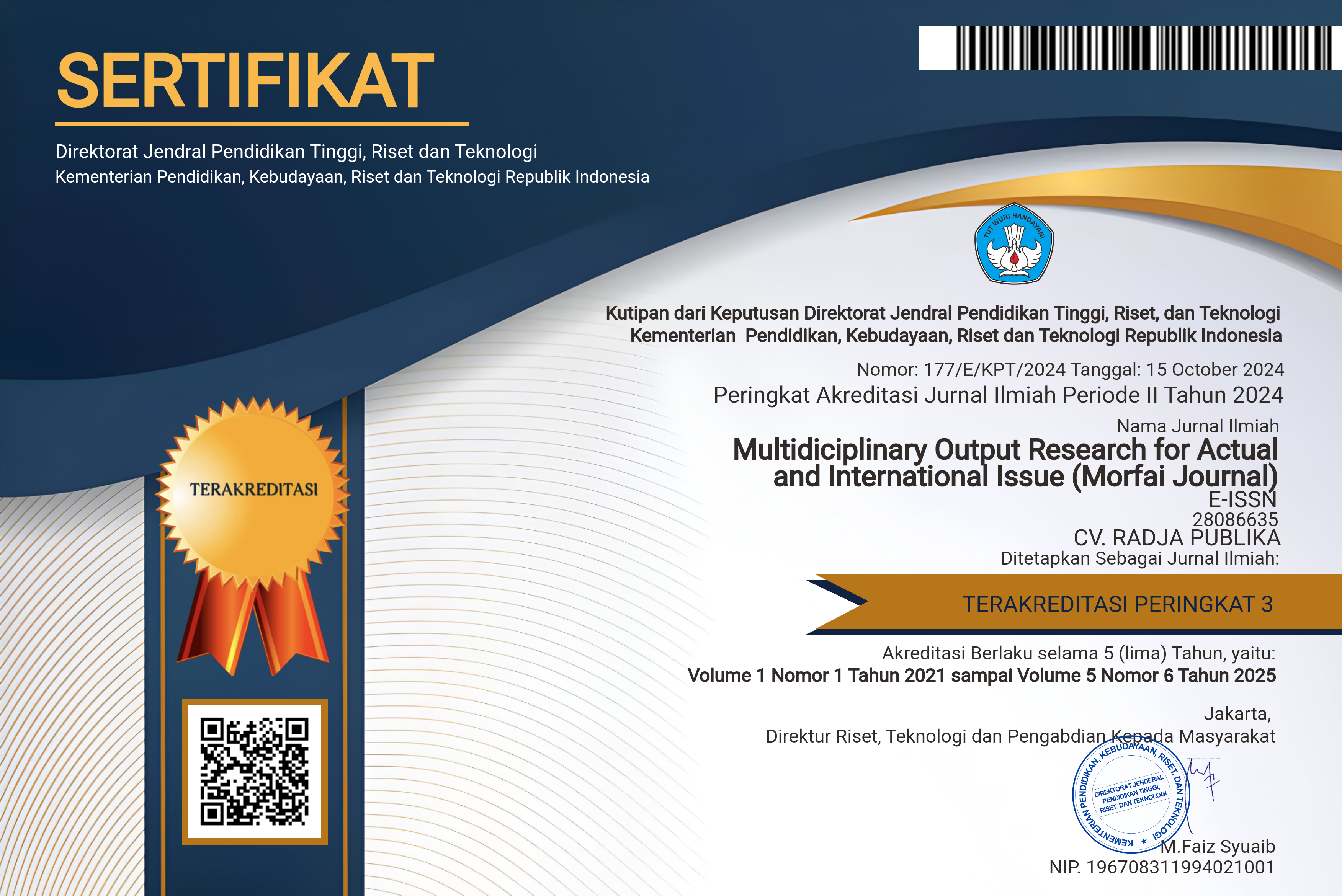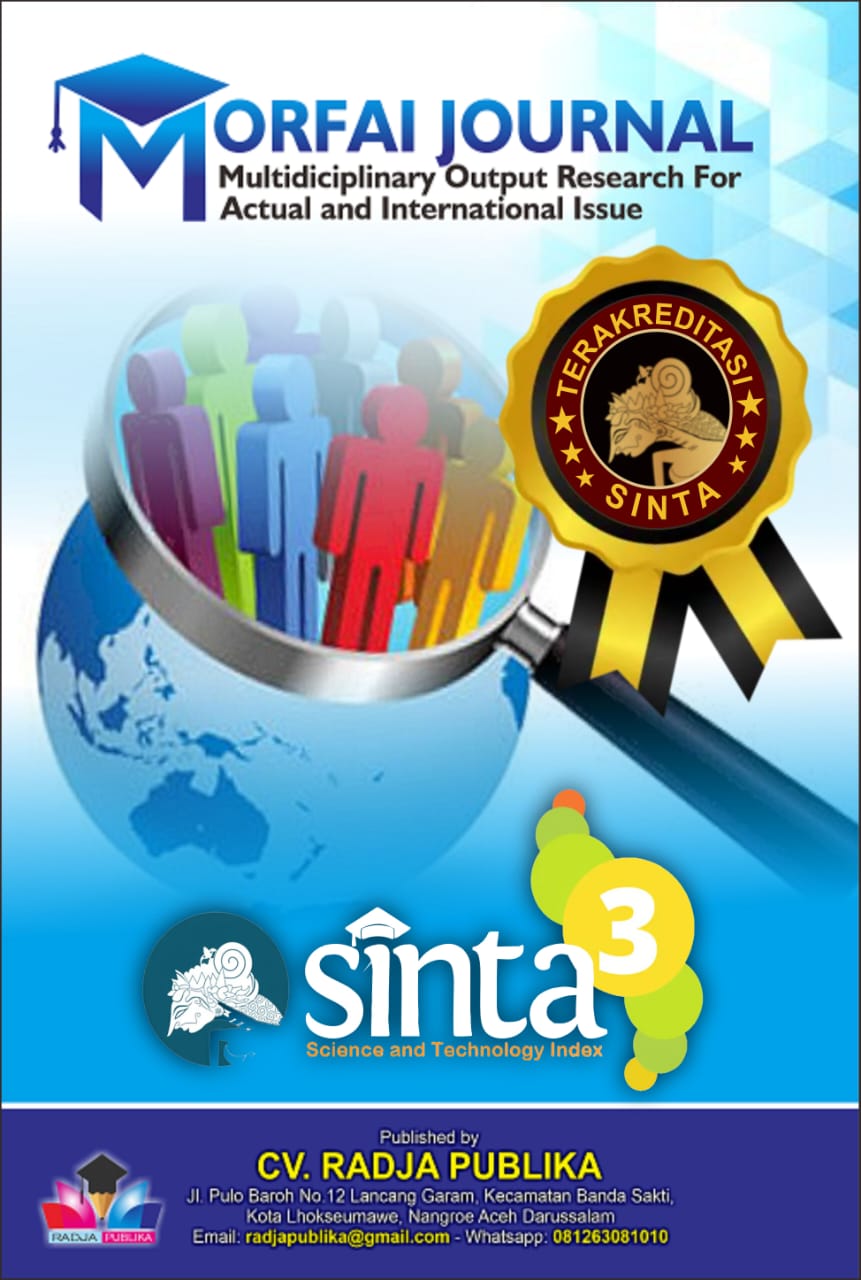GROUP DYNAMICS IN VIRTUAL TEAMS: A SYSTEMATIC REVIEW OF COLLABORATION, CONFLICT, AND INNOVATION
Main Article Content
Yohanes Wibisono
Shafira Widya Ramadhanti
Dina Maria Ulfa
Sopiah
The shifting landscape of work due to digitalization has made virtual teams a primary organizational structure in global enterprises. However, group dynamics within such teams remain a challenge, particularly in terms of collaboration, conflict, and innovation. This study aims to examine the interrelationship among these three variables through a systematic review of 43 peer-reviewed journal articles indexed in Scopus over the past five years. Utilizing a Systematic Literature Review (SLR) approach based on the PRISMA protocol, the data were analyzed descriptively, thematically, and conceptually. The findings indicate that effective collaboration is influenced by work structure, trust, and leadership, while conflict plays a dual role as both an obstacle and a trigger for innovation. This review proposes a conceptual model titled the "Virtual Team Dynamics Triad," mapping the relationship between collaboration, conflict, and innovation, with trust, leadership, and digital competence serving as moderating factors. Theoretically, this study enriches dynamic models of virtual team functioning, and practically, it offers recommendations for work design, training, and organizational policy. Future research is encouraged to test this model in cross-cultural settings and through multilevel approaches.
Amoako, D., Korang, V., & Ampong, E. A. (2024). Balancing innovation and privacy: The role of interactive technologies in shaping team dynamics and virtual collaboration. International Journal of Management Sciences, 11(1), 33–48. https://app.scholarai.io/paper?paper_id=DOI:10.53075/Ijmsirq/65543553453&original_url=https%3A%2F%2Fglobalweb1.com%2Findex.php%2Fojs%2Farticle%2Fview%2F145
Bai, Y., Lin, L., & Li, P. (2021). Leader–member exchange and group cohesion. Human Relations. https://journals.sagepub.com/doi/10.1177/0018726721999282
Caputo, A., Kargina, M., & Pellegrini, M. M. (2023). Conflict in virtual teams: A bibliometric analysis, systematic review, and research agenda. International Journal of Conflict Management. https://www.emerald.com/insight/content/doi/10.1108/IJCMA-07-2021-0117/full/html
Choi, H., Park, S., & Kang, J. (2020). Virtual team innovation performance: The role of group reflexivity. International Journal of Human-Computer Studies, 140, 102512. https://doi.org/10.1016/j.ijhcs.2020.102512
Cordery, J. L., & Morrison, D. (2023). Group dynamics and distributed work design. Human Resource Management Review, 33(1), 100839. https://doi.org/10.1016/j.hrmr.2021.100839
Creasy, T., & Carnes, A. (2017). The effects of workplace bullying on team learning, innovation and project success as mediated through virtual and traditional team dynamics. Information & Management, 54(3), 451–460. https://www.sciencedirect.com/science/article/pii/S0263786316303465
De Moura, G. R., & Abrams, D. (2021). Enhancing cohesion in virtual teams through group identity. Journal of Social Issues, 77(1), 94–109. https://doi.org/10.1111/josi.12406
El Idrissi, Y. (2023). Virtual team management framework. Human Behavior and Emerging Technologies. https://onlinelibrary.wiley.com/doi/full/10.1155/hbe2/9259425
Elo, S., & Kyngäs, H. (2008). The qualitative content analysis process. Journal of Advanced Nursing, 62(1), 107–115. https://doi.org/10.1111/j.1365-2648.2007.04569.x
Ferrazzi, K. (2021). Virtual and global networks. Harvard Business Press. https://books.google.com/books?hl=en&id=FPQTEAAAQBAJ
Gaim, M., & Wåhlin, N. (2020). Managing group tensions in virtual team innovation. Management Decision, 58(9), 1892–1905. https://doi.org/10.1108/MD-09-2019-1221
Gonzales, M., & Lehmann-Willenbrock, N. (2022). Conflict and trust dynamics in global virtual teams. Small Group Research, 53(3), 301–330. https://doi.org/10.1177/10464964221080645
Grant, A. M., & Parker, S. K. (2021). Redesigning work around virtual collaboration. Academy of Management Perspectives, 35(4), 622–637. https://doi.org/10.5465/amp.2020.0059
Greer, L. L., & Dannals, J. E. (2023). The dynamics of team power in remote collaboration. Academy of Management Annals, 17(1), 103–138. https://doi.org/10.5465/annals.2021.0034
Greimel, N. S., Kanbach, D. K., & Chelaru, M. (2023). Virtual teams and transformational leadership: An integrative literature review and avenues for further research. Journal of Innovation & Knowledge, 8(2), 100351. https://doi.org/10.1016/j.jik.2023.100351
Gressgård, L. J. (2021). Virtual team collaboration and innovation in organizations. Team Performance Management, 27(3/4), 176–190. https://www.emerald.com/insight/content/doi/10.1108/13527591111114738/full/html
Gromyko, I. (2024). Organizational support for leadership and teamwork. Vilnius University e-Publications. https://epublications.vu.lt/object/elaba:191573896/191573896.pdf
Helmold, M. (2021). Virtual and global networks. In Operations Management in Automotive Industries. https://link.springer.com/chapter/10.1007/978-3-030-63315-8_5
Hoch, J. E., & Kozlowski, S. W. J. (2023). Leadership in virtual work settings. European Journal of Work and Organizational Psychology. https://doi.org/10.1080/1359432X.2023.2250079
Hu, X. E., Hinds, R., Valentine, M. A., & Bernstein, M. S. (2022). A "Distance Matters" paradox: Facilitating intra-team collaboration can harm inter-team collaboration. ACM CHI Conference Proceedings. https://arxiv.org/pdf/2202.02484.pdf
Johnsson, M. (2023). Creating global high-performing innovation teams. Journal of Innovation Management, 11(2). https://journalengineering.fe.up.pt/index.php/jim/article/download/1395/779
Dincă, Melinda., & Luştrea, Anca. (2023). Students’ Perspectives on Team Dynamics in Project-Based Virtual Learning. Sage Journal. 13(1). https://doi.org/10.1177/21582440221147269
Klonek, F. E., & Parker, S. K. (2021). Designing SMART teamwork. Journal of Experimental Social Psychology. https://www.sciencedirect.com/science/article/pii/S0090261621000164
Ko, K. K. B., To, C. K. M., Zhang, Z. M., & Ngai, E. W. T. (2019). Analytic collaboration in virtual innovation projects. Industrial Marketing Management, 83, 215–228. https://www.sciencedirect.com/science/article/pii/S0148296311000208
Lam, S., & West, M. (2021). Group development trajectories in global virtual teams. Group & Organization Management, 46(3), 398–430. https://doi.org/10.1177/10596011211023855
Lee, M., & Kim, J. (2022). Digital communication overload and group dynamics in virtual teams. Journal of Business Research, 146, 620–631. https://doi.org/10.1016/j.jbusres.2022.04.029
Licorish, S. A., & MacDonell, S. G. (2021). How do globally distributed agile teams self-organise? Journal of Systems and Software, 179, 111027. https://arxiv.org/pdf/2106.10614.pdf
Lu, Y., & Zhang, H. (2021). Technology-mediated collaboration and group dynamics. Group Decision and Negotiation, 30, 567–584. https://doi.org/10.1007/s10726-021-09724-4
Mai, B., Garcia, B., Xie, L., & McCubbins, O. P. (2020). Teamwork in Virtual World. In Advances in Human Factors in Training (pp. 90–101). Springer. https://link.springer.com/chapter/10.1007/978-3-030-50341-3_10
Makarius, E. E., Mukherjee, D., Fox, J., & Fox, A. (2021). Rising to the challenge: Virtual team leadership. Business Horizons, 64(6), 647–658. https://doi.org/10.1016/j.bushor.2021.04.006
Martinez, C., & Braun, M. (2023). Psychological safety and conflict in remote engineering teams. IEEE Transactions on Engineering Management. https://doi.org/10.1109/TEM.2023.3270419
Morrison-Smith, S., & Ruiz, J. (2020). Challenges and barriers in virtual teams: A literature review. SN Applied Sciences, 2(6), 1–15. https://link.springer.com/article/10.1007/s42452-020-2801-5
Newman, A., Schwarz, G., Cooper, B., & Sendjaya, S. (2023). Trust and conflict in virtual teams. Journal of Management. https://journals.sagepub.com/doi/10.1177/01492063221129349
Nishii, L. H., & Mayer, D. M. (2020). How team diversity affects group dynamics and innovation in remote settings. Organizational Behavior and Human Decision Processes, 161, 1–13. https://doi.org/10.1016/j.obhdp.2020.01.002
Noor, S., Isa, F. M., & Aziz, R. (2025). Group dynamics of virtual innovation teams in Indonesian tech startups. The Qualitative Report, 30(3), 610–631. https://nsuworks.nova.edu/tqr/vol30/iss3/6/
O’Neill, R., & Allen, D. (2023). Communication impacts in remote work. Systems Engineering, 26(1), 123–137. https://doi.org/10.1002/sys.21716
Page, M. J., McKenzie, J. E., Bossuyt, P. M., Boutron, I., Hoffmann, T. C., Mulrow, C. D., ... & Moher, D. (2021). The PRISMA 2020 statement: An updated guideline for reporting systematic reviews. BMJ, 372, n71. https://doi.org/10.1136/bmj.n71
Rosen, B., Furst, S., & Blackburn, R. (2020). Overcoming barriers to collaboration in virtual teams. Team Performance Management, 26(1/2), 50–66. https://doi.org/10.1108/TPM-05-2019-0041
Roth, P., & Doehne, M. (2024). Cohesion is lower in virtualized collaborations: A comparison of teams’ network structure. Small Group Research, 55(4), 560–594. https://doi.org/10.1177/10464964231202454
Salas, E., Reyes, D. L., & Woods, A. L. (2022). Enhancing teamwork in remote teams through training. Industrial and Organizational Psychology, 15(3), 305–322. https://doi.org/10.1017/iop.2022.17
Santos, R. E. de S., & Ralph, P. (2022). A grounded theory of coordination in remote-first and hybrid software teams. Empirical Software Engineering. https://arxiv.org/pdf/2202.10445.pdf
Siddaway, A. P., Wood, A. M., & Hedges, L. V. (2019). How to do a systematic review: A best practice guide for conducting and reporting narrative reviews, meta-analyses, and meta-syntheses. Annual Review of Psychology, 70, 747–770. https://doi.org/10.1146/annurev-psych-010418-102803
Singh, T. (2021). Team Dynamics at Work. BIITM Repository. http://biitm.dspaces.org/bitstream/123456789/361/1/Team%20Dynamics%20at%20Work.pdf
Smith, J., & Lee, A. (2023). Optimal role fulfillment in distributed teams. Computers in Human Behavior. https://www.sciencedirect.com/science/article/pii/S0747563223001234
Sørensen, M. H., & Jensen, T. (2021). Managing remote work: How teams adapt dynamics during digital transition. Information Systems Journal, 31(6), 825–849. https://doi.org/10.1111/isj.12323
Tranfield, D., Denyer, D., & Smart, P. (2003). Towards a methodology for developing evidence‐informed management knowledge by means of systematic review. British Journal of Management, 14(3), 207–222. https://doi.org/10.1111/1467-8551.00375
Valenduc, M., & Léonard, E. (2023). Successful teamwork amongst geographically dispersed teams. UCLouvain Repository. https://dial.uclouvain.be/downloader/downloader.php?pid=thesis%3A14451&datastream=PDF_01&cover=cover-mem
Van Puyvelde, M., & Gijbels, D. (2022). Living on the edge. Frontiers in Research Metrics and Analytics, 10. https://www.frontiersin.org/articles/10.3389/fnrgo.2022.1007774/pdf
Wang, J., & Liu, C. (2022). Team learning in virtual environments. Computers & Education, 190, 104630. https://doi.org/10.1016/j.compedu.2022.104630
Wang, S., & Liu, Y. (2023). Leadership behaviors and group emotion in distributed teams. International Journal of Project Management, 41(2), 145–157. https://doi.org/10.1016/j.ijproman.2022.10.001
Wei, L. H., Thurasamy, R., & Popa, S. (2018). Managing virtual teams for open innovation in Global Business Services industry. Management Decision. https://www.emerald.com/insight/content/doi/10.1108/md-08-2017-0766/full/html
Whillans, A., Perlow, L., & Turek, A. (2021). Experimenting during the shift to virtual team work. Organizational Dynamics. https://pmc.ncbi.nlm.nih.gov/articles/PMC9761399/pdf/main.pdf
Wiatr, Anna., Skowron-Mielnik, Beata. (2023). Hybrid team management: The long and winding road. Organizational Dynamics 52(1). 100936. https://doi.org/10.1016/j.orgdyn.2022.100936
Yin, J., Qu, M., Li, M., & Liao, G. (2022). Team leader's conflict management style and team innovation performance in remote R&D teams—With team climate perspective. Sustainability, 14(17), 10949. https://www.mdpi.com/2071-1050/14/17/10949
Zakaria, N., & Yusof, S. A. M. (2020). Communication accommodation in global virtual teams. International Journal of Intercultural Relations, 79, 49–62. https://doi.org/10.1016/j.ijintrel.2020.03.002









